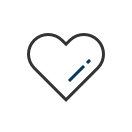20 Fun Facts About Depression Treatment Breakthroughs
페이지 정보

본문
Depression Treatment Breakthroughs
With the introduction of a new generation depression treatment breakthroughs, researchers are taking on this disease from more angles than ever before. These approaches will help you locate the right medication and avoid relapses.
If your depression doesn't respond to antidepressants, psychotherapy can be effective. This includes cognitive behavior therapy and psychotherapy for interpersonal relationships.
Deep Brain Stimulation
Deep brain stimulation is a surgical technique that involves the use of electrodes within the brain are used to target specific areas of the brain that can cause conditions and diseases such as depression treatment no Medication. The electrodes connect to a device that emits pulsing electric pulses to treat the disease. The DBS device, also referred to as a neurostimulator, is used to treat other neurological disorders like epilepsy and Parkinson's disease. The pulses of the DBS device can "jam" circuits that are causing abnormal brain activity in depression, while leaving other circuits intact.
Clinical trials of DBS have demonstrated significant improvements in patients suffering from treatment resistant depression (TRD). Despite the positive results however, the path to a stable recovery from TRD is different for each patient. Clinicians rely on subjective information from interviews with patients and psychiatric rating scales that can be difficult to interpret.
Researchers from the Georgia Institute of Technology, Emory University School of Medicine and the Icahn School of Medicine at Mount Sinai, have developed an algorithm that detects subtle changes in brain activity patterns that can differentiate between stable and depressive recovery states. The research of the scientists is published in Nature Human Behaviour, exemplifies the importance of combining neuroscience, medical and computer engineering disciplines to develop potentially life-changing treatments.
During the DBS procedure, doctors place a wire-like lead inside the brain through a hole within the skull. The lead is equipped with a variety of electrodes on its tip that send electrical signals to the brain. The lead is connected to an extension cable that runs from the head, through the ear and then down to the chest. The extension and the lead are connected to a stimulator powered by batteries implanted under the skin of the chest.
The neurostimulator that can be programmed generates electric pulses to regulate abnormal brain activity in the regions targeted by DBS devices. In the study, researchers used DBS to target a particular region of the brain known as the subcallosal cingulate cortex (SCC). Researchers discovered that when SCC was stimulated, it caused an increase in the levels of dopamine, which can improve symptoms of depression.
Brain Scanners
A doctor can employ a variety tools and techniques to diagnose the depression, but the brain scan is the most effective method. This technology uses imaging in order to track changes at the functional and structural levels of brain activity. It can be used by a patient to determine the affected regions of their brain, and then determine the state of these regions in real-time.
Brain mapping can help predict the type of treatment is most effective for an individual. Some people respond better to antidepressant medication than others. However it's not always the case. Physicians and psychologists can prescribe medication more accurately by using MRI to determine the effectiveness. It can also help improve compliance by allowing patients to see how their treatment is progressing.
Despite its widespread use, research in mental health has been hindered by the difficulty of measuring it. There is an abundance of information about depression anxiety, depression, and other conditions. However it's been difficult to pinpoint the causes. However, the latest technology why is cbt used in the treatment of depression beginning to unravel the causes behind these conditions.
A recent study published in Nature Medicine, for example, classified depression into six distinct subtypes. This opens the doorway to personalized treatment.
Researchers used fMRI to examine the brain activity of 801 individuals with depression and 137 without. Researchers examined the activation of brain circuits that are affected by depression, such as those that control cognition or emotions. They examined a person's brain scan at relaxation and when they completed specific tasks.
The results were that a combination of resting-state and task-based measures were able to determine whether or not a person would respond to SSRIs. This is the first time a predictive test has been developed in psychiatry. The team is now working on a computerized instrument that can make these predictions.
This is particularly beneficial for those who don't respond to conventional therapies like therapy or medication. In fact, more than 60% of people suffering from depression don't respond to the first form of treatment they receive. Some of these patients are referred to as treatment-resistant and can be difficult to treat with a standard regimen, but the hope is that new technologies will help to improve treatment options.
Brain Implants
Sarah was suffering from a severe form of depression. She described it as a dark hole that dragged her down. It was so strong that she was unable to move. She tried all kinds of drugs however none of them had given an indefinite lift. She also tried other treatments like ketamine injections or electroconvulsive therapy, but they did not work either. She was willing to undergo surgery to implant electrodes in her brain that would send her a targeted shock when she was nearing having an attack of depression.
Deep brain stimulation is a technique that is used extensively in the treatment of Parkinson's disease. It has also been shown to be beneficial for patients who are not able to receive treatment. It's not a cure, but helps the brain cope. It makes use of a device to implant small electrodes in specific brain regions, like the pacemaker.
 In a research study published Monday in the journal Nature Medicine, two researchers at University of California at San Francisco (UCSF) explain how they made use of a DBS device for the first time to create a custom the treatment of depression for a patient. They called it a "revolutionary" new method that could pave the way for the development of customizable DBS treatments for other patients.
In a research study published Monday in the journal Nature Medicine, two researchers at University of California at San Francisco (UCSF) explain how they made use of a DBS device for the first time to create a custom the treatment of depression for a patient. They called it a "revolutionary" new method that could pave the way for the development of customizable DBS treatments for other patients.
The team looked into Sarah's brain's neuronal circuits and found that her amygdala may be the reason for her depressive episodes. They discovered that the ventral striatum an area of her brain was responsible for calming her amygdala's reaction. They then implanted the matchbox-sized device in Sarah's head and strung its electrode legs shaped like spaghetti to the two brain regions.
If a symptom of depression occurs the device transmits a small electrical charge to Sarah's amygdala, and ventral striatum. This jolt is intended to stop the development of depression and nudge her into a more positive mood. It's not a cure for hormonal depression treatment however it makes a significant difference for those who require it the most. In the future it may be used to determine the biological signs that a depression is coming and allows doctors to prepare by boosting the stimulation.
Personalized Medicine
Personalized medicine is a method to create a custom-made prevention, diagnosis and treatment strategies to individual patients, based on the information gathered from molecular profiling. medical imaging, lifestyle data etc. This differs from conventional treatments designed for the average patient. It is a one-size-fits-all approach which could not be efficient or efficient.
Recent research has revealed a range of factors that can cause depression among different patients. These include genetic variations and neural circuitry malfunctions as well as biomarkers psychosocial markers and others. Personalized psychiatry seeks to integrate these findings in the clinical decision-making process to ensure the best treatment. It also aims to facilitate the development and implementation of specific treatment plans for psychiatric issues such as depression.
While the field of personalized psychiatry is progressing, several obstacles hinder its clinical application. For instance many psychiatrists aren't familiar with the various antidepressants and their profile of pharmacology, which can cause a poor prescribing. In addition, the complexity and cost of integrating multiomics data into healthcare systems, as well as ethical considerations must be taken into account.
Pharmacogenetics is a promising method to advance the field of personalized psychiatry. It utilizes the patient's genetic makeup in order to determine the correct dose of medication. It has been suggested that this can aid in reducing the risk of drug-related side effects and increase the effectiveness of treatment, particularly when it comes to SSRIs.
It is crucial to remember that this is a possibility solution, and more research is required before it is widely accepted. In addition, other aspects such as environmental influences and lifestyle choices are important to take into consideration. The integration of pharmacogenetics and lifestyle choices in depression treatment should therefore be carefully balanced.
Functional neuroimaging is yet another promising method to guide the selection of antidepressants and psychotherapy. Studies have demonstrated that the activation levels in specific neural circuits (e.g. The response to psychotherapeutic or pharmacological treatment is determined by the pregenual and ventral cortex. Furthermore, some clinical trials have already utilized these findings to guide their selection of participants, targeting those with greater levels of activation and thus showing more favorable responses to treatment.
With the introduction of a new generation depression treatment breakthroughs, researchers are taking on this disease from more angles than ever before. These approaches will help you locate the right medication and avoid relapses.
If your depression doesn't respond to antidepressants, psychotherapy can be effective. This includes cognitive behavior therapy and psychotherapy for interpersonal relationships.
Deep Brain Stimulation
Deep brain stimulation is a surgical technique that involves the use of electrodes within the brain are used to target specific areas of the brain that can cause conditions and diseases such as depression treatment no Medication. The electrodes connect to a device that emits pulsing electric pulses to treat the disease. The DBS device, also referred to as a neurostimulator, is used to treat other neurological disorders like epilepsy and Parkinson's disease. The pulses of the DBS device can "jam" circuits that are causing abnormal brain activity in depression, while leaving other circuits intact.
Clinical trials of DBS have demonstrated significant improvements in patients suffering from treatment resistant depression (TRD). Despite the positive results however, the path to a stable recovery from TRD is different for each patient. Clinicians rely on subjective information from interviews with patients and psychiatric rating scales that can be difficult to interpret.
Researchers from the Georgia Institute of Technology, Emory University School of Medicine and the Icahn School of Medicine at Mount Sinai, have developed an algorithm that detects subtle changes in brain activity patterns that can differentiate between stable and depressive recovery states. The research of the scientists is published in Nature Human Behaviour, exemplifies the importance of combining neuroscience, medical and computer engineering disciplines to develop potentially life-changing treatments.
During the DBS procedure, doctors place a wire-like lead inside the brain through a hole within the skull. The lead is equipped with a variety of electrodes on its tip that send electrical signals to the brain. The lead is connected to an extension cable that runs from the head, through the ear and then down to the chest. The extension and the lead are connected to a stimulator powered by batteries implanted under the skin of the chest.
The neurostimulator that can be programmed generates electric pulses to regulate abnormal brain activity in the regions targeted by DBS devices. In the study, researchers used DBS to target a particular region of the brain known as the subcallosal cingulate cortex (SCC). Researchers discovered that when SCC was stimulated, it caused an increase in the levels of dopamine, which can improve symptoms of depression.
Brain Scanners
A doctor can employ a variety tools and techniques to diagnose the depression, but the brain scan is the most effective method. This technology uses imaging in order to track changes at the functional and structural levels of brain activity. It can be used by a patient to determine the affected regions of their brain, and then determine the state of these regions in real-time.
Brain mapping can help predict the type of treatment is most effective for an individual. Some people respond better to antidepressant medication than others. However it's not always the case. Physicians and psychologists can prescribe medication more accurately by using MRI to determine the effectiveness. It can also help improve compliance by allowing patients to see how their treatment is progressing.
Despite its widespread use, research in mental health has been hindered by the difficulty of measuring it. There is an abundance of information about depression anxiety, depression, and other conditions. However it's been difficult to pinpoint the causes. However, the latest technology why is cbt used in the treatment of depression beginning to unravel the causes behind these conditions.
A recent study published in Nature Medicine, for example, classified depression into six distinct subtypes. This opens the doorway to personalized treatment.
Researchers used fMRI to examine the brain activity of 801 individuals with depression and 137 without. Researchers examined the activation of brain circuits that are affected by depression, such as those that control cognition or emotions. They examined a person's brain scan at relaxation and when they completed specific tasks.
The results were that a combination of resting-state and task-based measures were able to determine whether or not a person would respond to SSRIs. This is the first time a predictive test has been developed in psychiatry. The team is now working on a computerized instrument that can make these predictions.
This is particularly beneficial for those who don't respond to conventional therapies like therapy or medication. In fact, more than 60% of people suffering from depression don't respond to the first form of treatment they receive. Some of these patients are referred to as treatment-resistant and can be difficult to treat with a standard regimen, but the hope is that new technologies will help to improve treatment options.
Brain Implants
Sarah was suffering from a severe form of depression. She described it as a dark hole that dragged her down. It was so strong that she was unable to move. She tried all kinds of drugs however none of them had given an indefinite lift. She also tried other treatments like ketamine injections or electroconvulsive therapy, but they did not work either. She was willing to undergo surgery to implant electrodes in her brain that would send her a targeted shock when she was nearing having an attack of depression.
Deep brain stimulation is a technique that is used extensively in the treatment of Parkinson's disease. It has also been shown to be beneficial for patients who are not able to receive treatment. It's not a cure, but helps the brain cope. It makes use of a device to implant small electrodes in specific brain regions, like the pacemaker.
 In a research study published Monday in the journal Nature Medicine, two researchers at University of California at San Francisco (UCSF) explain how they made use of a DBS device for the first time to create a custom the treatment of depression for a patient. They called it a "revolutionary" new method that could pave the way for the development of customizable DBS treatments for other patients.
In a research study published Monday in the journal Nature Medicine, two researchers at University of California at San Francisco (UCSF) explain how they made use of a DBS device for the first time to create a custom the treatment of depression for a patient. They called it a "revolutionary" new method that could pave the way for the development of customizable DBS treatments for other patients.The team looked into Sarah's brain's neuronal circuits and found that her amygdala may be the reason for her depressive episodes. They discovered that the ventral striatum an area of her brain was responsible for calming her amygdala's reaction. They then implanted the matchbox-sized device in Sarah's head and strung its electrode legs shaped like spaghetti to the two brain regions.
If a symptom of depression occurs the device transmits a small electrical charge to Sarah's amygdala, and ventral striatum. This jolt is intended to stop the development of depression and nudge her into a more positive mood. It's not a cure for hormonal depression treatment however it makes a significant difference for those who require it the most. In the future it may be used to determine the biological signs that a depression is coming and allows doctors to prepare by boosting the stimulation.
Personalized Medicine
Personalized medicine is a method to create a custom-made prevention, diagnosis and treatment strategies to individual patients, based on the information gathered from molecular profiling. medical imaging, lifestyle data etc. This differs from conventional treatments designed for the average patient. It is a one-size-fits-all approach which could not be efficient or efficient.
Recent research has revealed a range of factors that can cause depression among different patients. These include genetic variations and neural circuitry malfunctions as well as biomarkers psychosocial markers and others. Personalized psychiatry seeks to integrate these findings in the clinical decision-making process to ensure the best treatment. It also aims to facilitate the development and implementation of specific treatment plans for psychiatric issues such as depression.
While the field of personalized psychiatry is progressing, several obstacles hinder its clinical application. For instance many psychiatrists aren't familiar with the various antidepressants and their profile of pharmacology, which can cause a poor prescribing. In addition, the complexity and cost of integrating multiomics data into healthcare systems, as well as ethical considerations must be taken into account.
Pharmacogenetics is a promising method to advance the field of personalized psychiatry. It utilizes the patient's genetic makeup in order to determine the correct dose of medication. It has been suggested that this can aid in reducing the risk of drug-related side effects and increase the effectiveness of treatment, particularly when it comes to SSRIs.
It is crucial to remember that this is a possibility solution, and more research is required before it is widely accepted. In addition, other aspects such as environmental influences and lifestyle choices are important to take into consideration. The integration of pharmacogenetics and lifestyle choices in depression treatment should therefore be carefully balanced.
Functional neuroimaging is yet another promising method to guide the selection of antidepressants and psychotherapy. Studies have demonstrated that the activation levels in specific neural circuits (e.g. The response to psychotherapeutic or pharmacological treatment is determined by the pregenual and ventral cortex. Furthermore, some clinical trials have already utilized these findings to guide their selection of participants, targeting those with greater levels of activation and thus showing more favorable responses to treatment.
- 이전글이혼을 막아준 비아그라 후기【hanayakguk.com】 24.08.16
- 다음글Mostbet İncelemesi 2024: Online Bahis ve Kumar Platformu | Türkiye 24.08.16
댓글목록
등록된 댓글이 없습니다.




